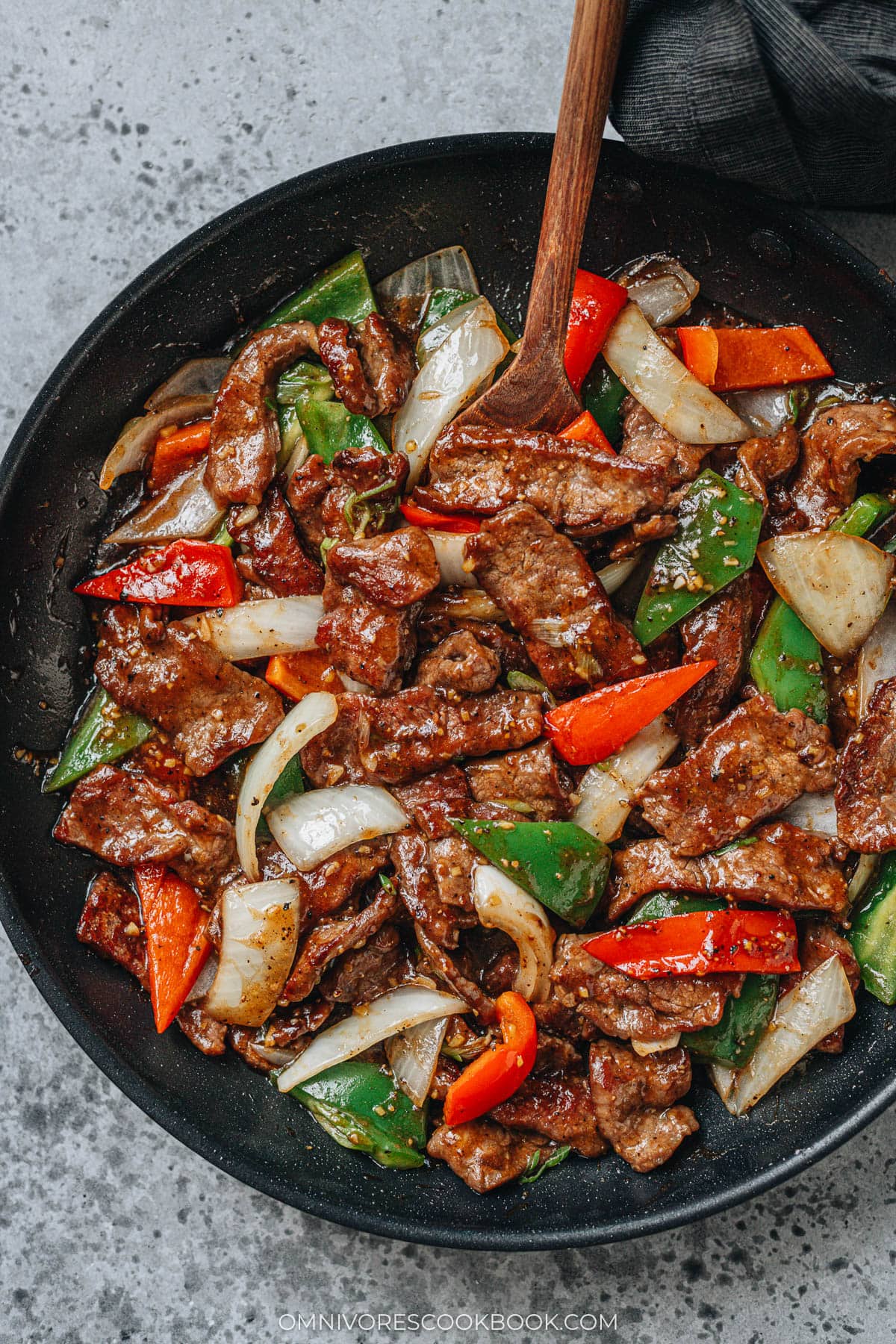
Chinese black pepper steak is a popular dish at Cantonese restaurants. It is a bold and savory stir fry that brings together tender beef, crisp vegetables, and a sauce that strikes the perfect balance between peppery heat and savory umami. Unlike Western steak dinners, this dish is all about bite-sized pieces cooked quickly over high heat to create tender juicy beef that is coated with a velvety sauce. It is quite quick to put together, making it ideal for a weeknight.
Ingredients
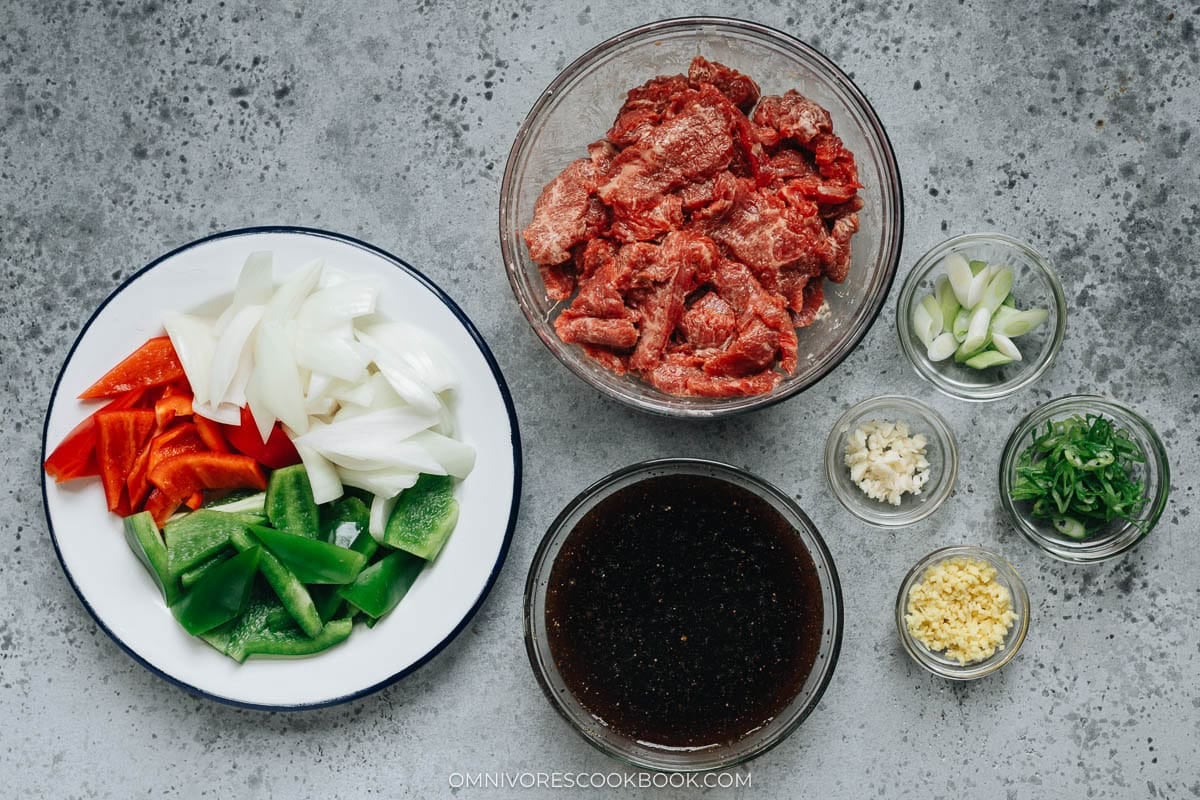
What beef cut to use and how to prepare
Tender cuts like flank steak, sirloin, and ribeye work best. My favorite cut for stir fry is always flank steak, which is well marbled, has a rich flavor, and is very tender.
To cut flank steak, I always divide it into two large pieces along the grain, then slice them further against the grain into bite-size pieces. To achieve nice even pieces, I like to tilt my knife to a 45 degree angle for a slightly wider slice.
I use soy sauce and Shaoxing wine in the marinade for seasoning. Cornstarch is used to coat the beef, so it’s protected from the high heat and yields a tender texture. To achieve restaurant-style texture, I also use baking soda in the marinade. It breaks down the tough tissues in the beef, keeping it extra tender and juicy. It also removes moisture from the surface, so the beef browns and crisps up effectively.
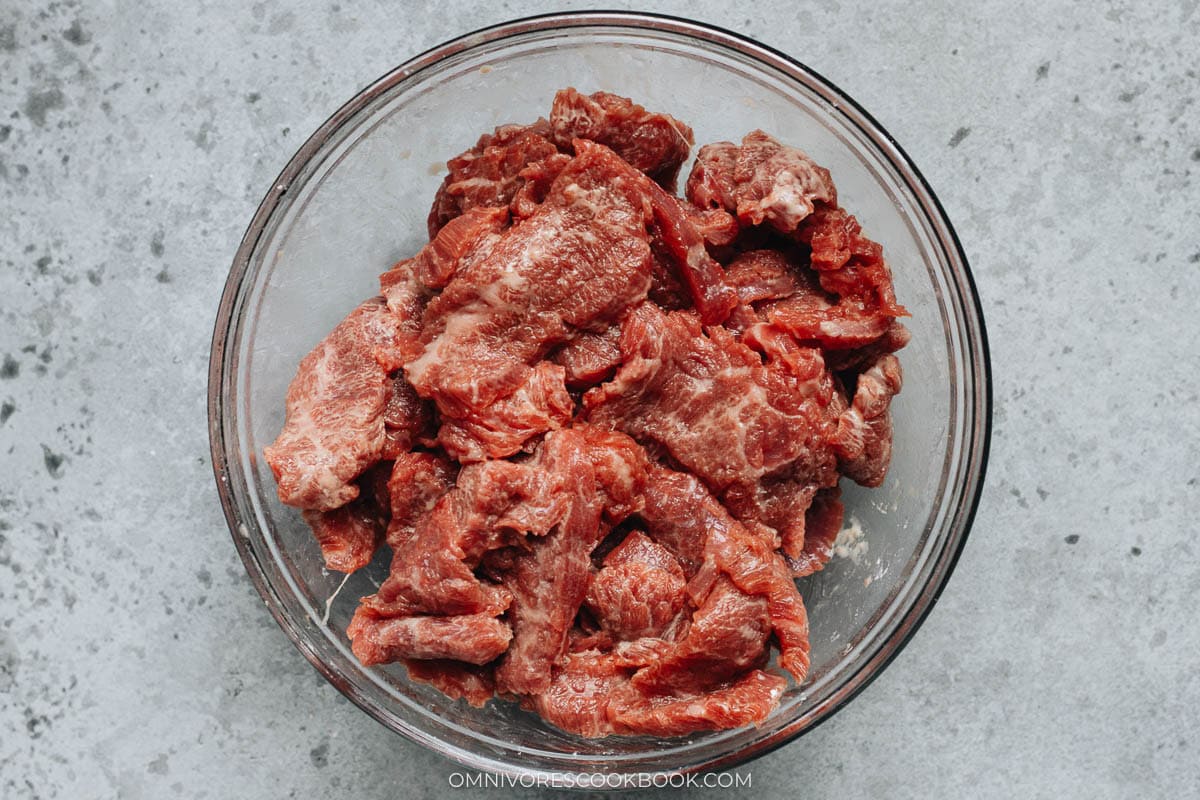
The Sauce
The magic of this dish lies in its sauce. A typical black pepper sauce is made with:
- Chicken stock for more body and extra sauce to coat the beef
- Light soy sauce for saltiness and umami
- Dark soy sauce for the dark brown color
- Shaoxing wine to round out the flavors
- Sugar to balance the sharpness of the black pepper
- LOTS of coarsely ground black pepper for the main flavor
How I cut my vegetables
I like to cut peppers and onions into pieces that are similar to beef. To achieve the cut, I first slice the pepper into halves. Then I tilt my knife lightly to slice off a triangle, and tilt the knife again to slice off an irregular shape.

Vegetable options
While onions and bell peppers are the most traditional choices, you can also use snap peas, hot chili peppers, mushrooms, or blanched broccoli. Their crispness contrasts beautifully with the tender beef and silky sauce.
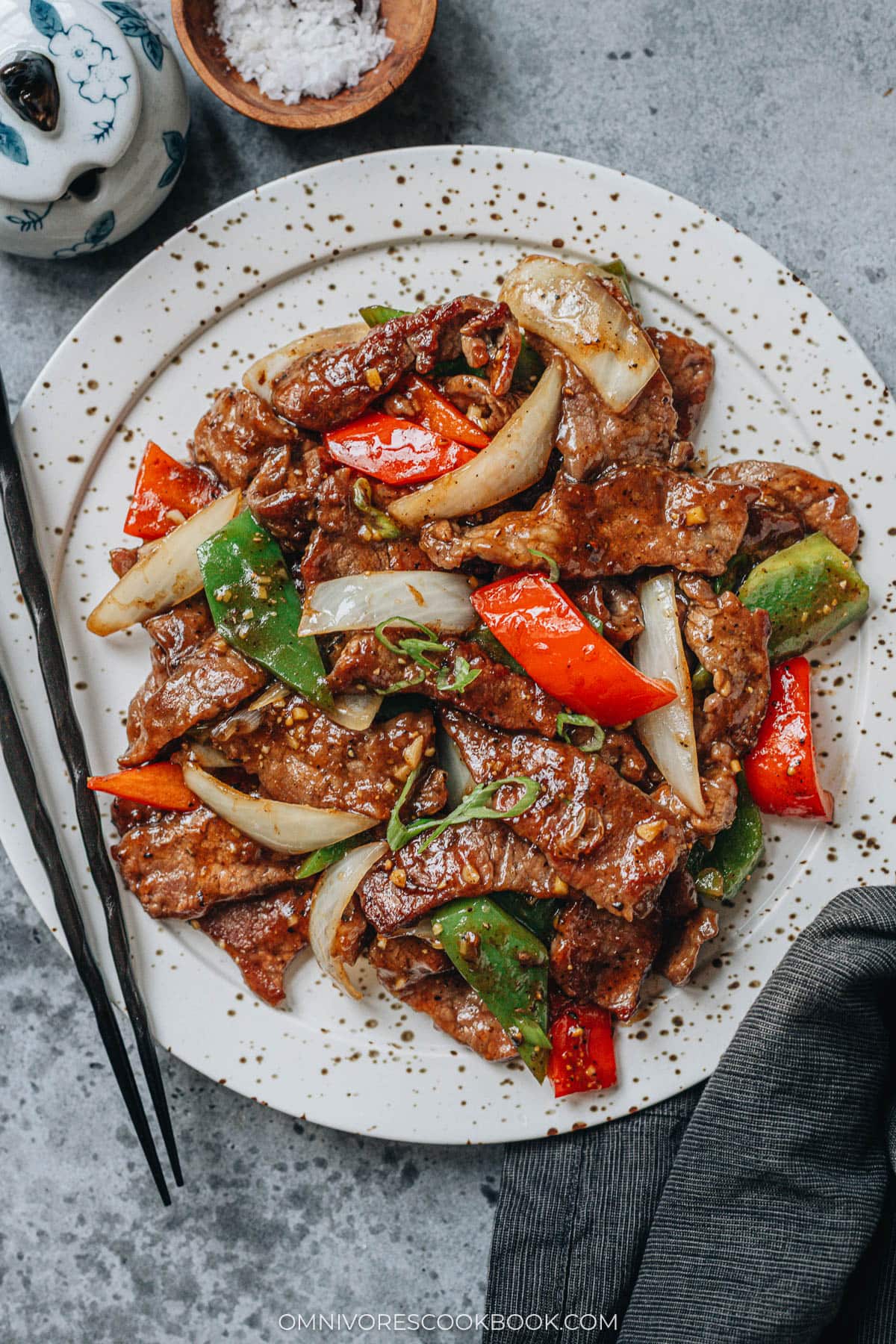
How to make
Sear the steak in a hot pan. Depending on the size of your pan, you might want to cook in two batches so the steak can be spread out evenly without overlapping. Since we use baking soda, you will notice the steak brown easily over high heat. Do not stir it once you’ve spread out the steak, and only flip it once it is browned. As soon as the center is no longer pink, take it out immediately to avoid overcooking.
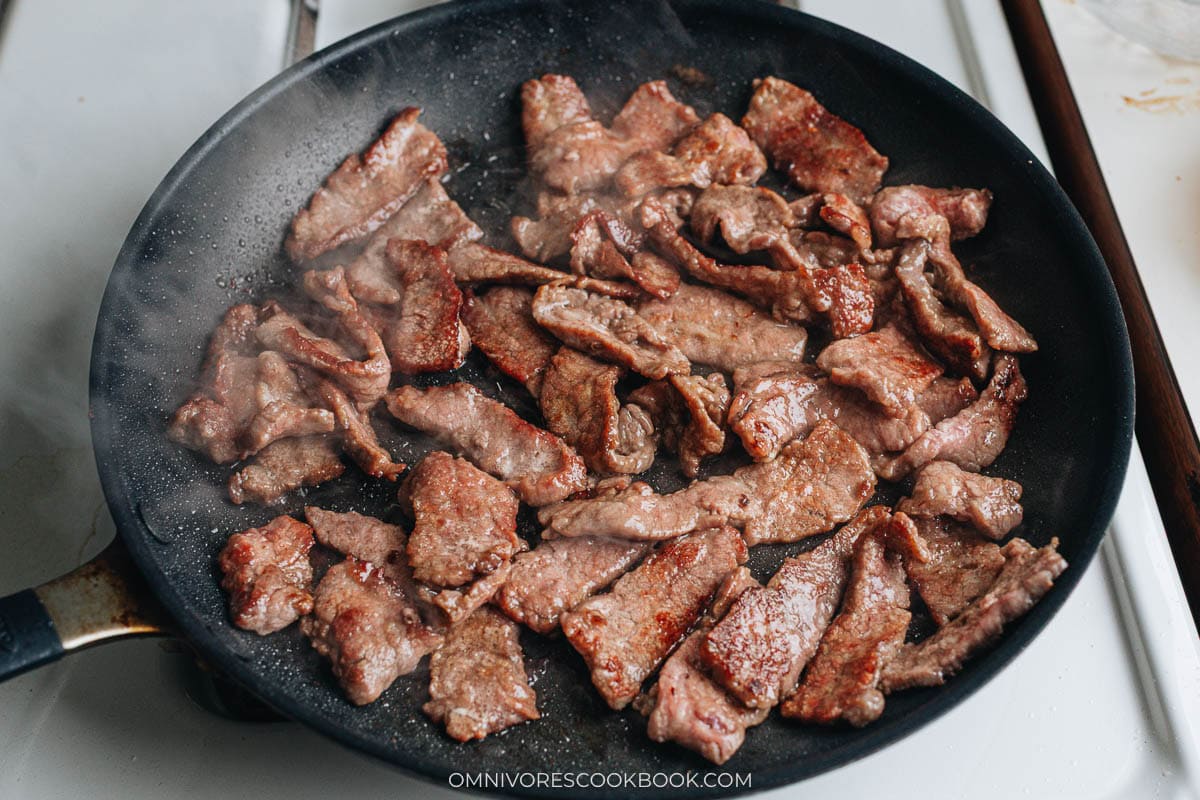
Cook the aromatics to infuse the oil. I always put my pan on a lower heat since the pan will have residual heat from cooking the steak.
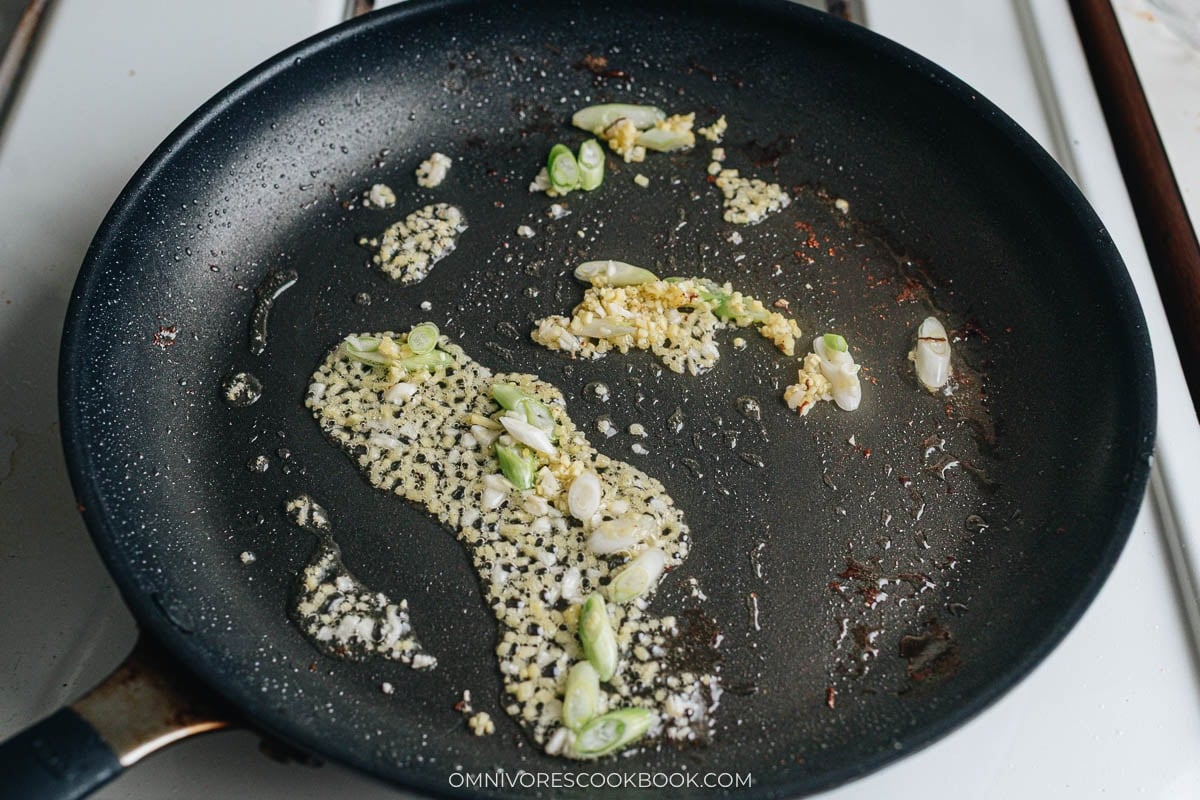
Stir fry the vegetables. Chinese restaurants usually cook the vegetables briefly, so they remain very crisp. But if you prefer your vegetables a little more tender, you can cook them a little longer. Just remember, the vegetables will keep cooking after you add the sauce and will soften a little more later into the cooking.
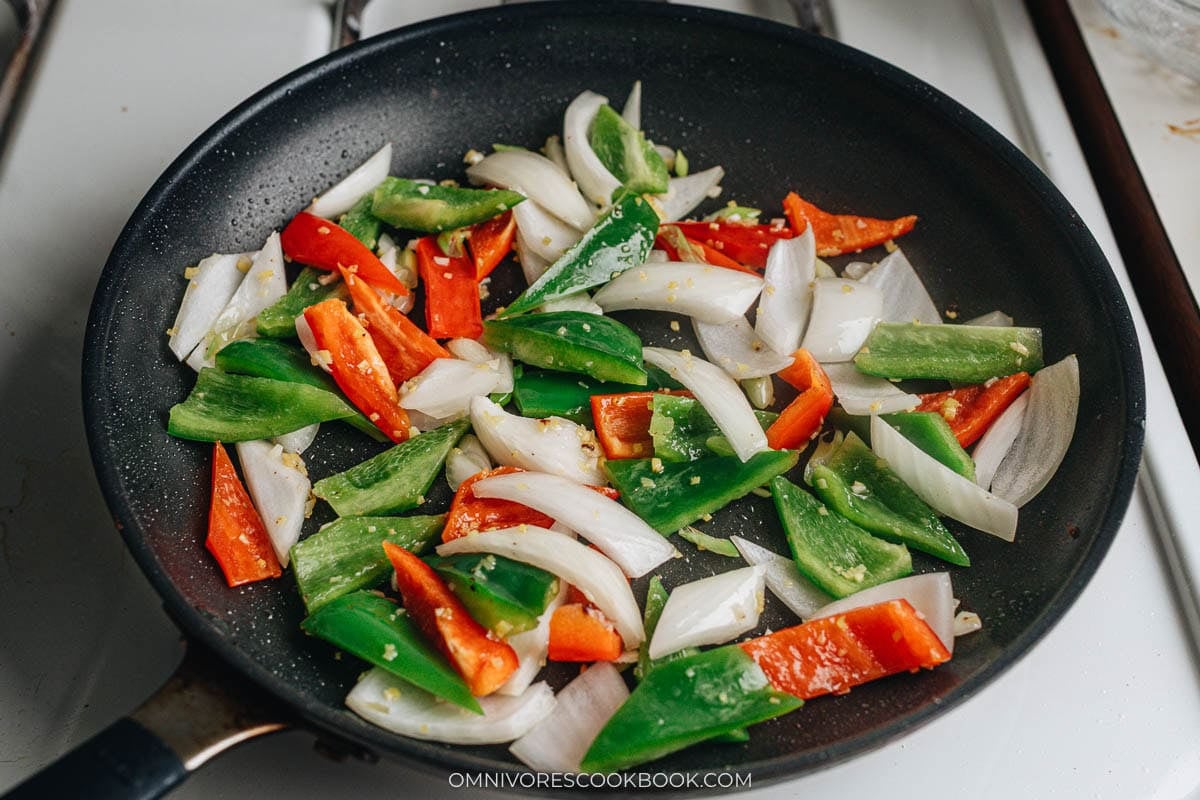
Lastly, add the sauce, reduce it, and add back the steak. Always stir the sauce until the cornstarch fully dissolves again before adding it, because the starch tends to settle on the bottom of the bowl. The last step happens very quickly. You want to stir everything together quickly, then transfer it to a plate, so the ingredients won’t keep cooking in the residual heat of the hot pan.
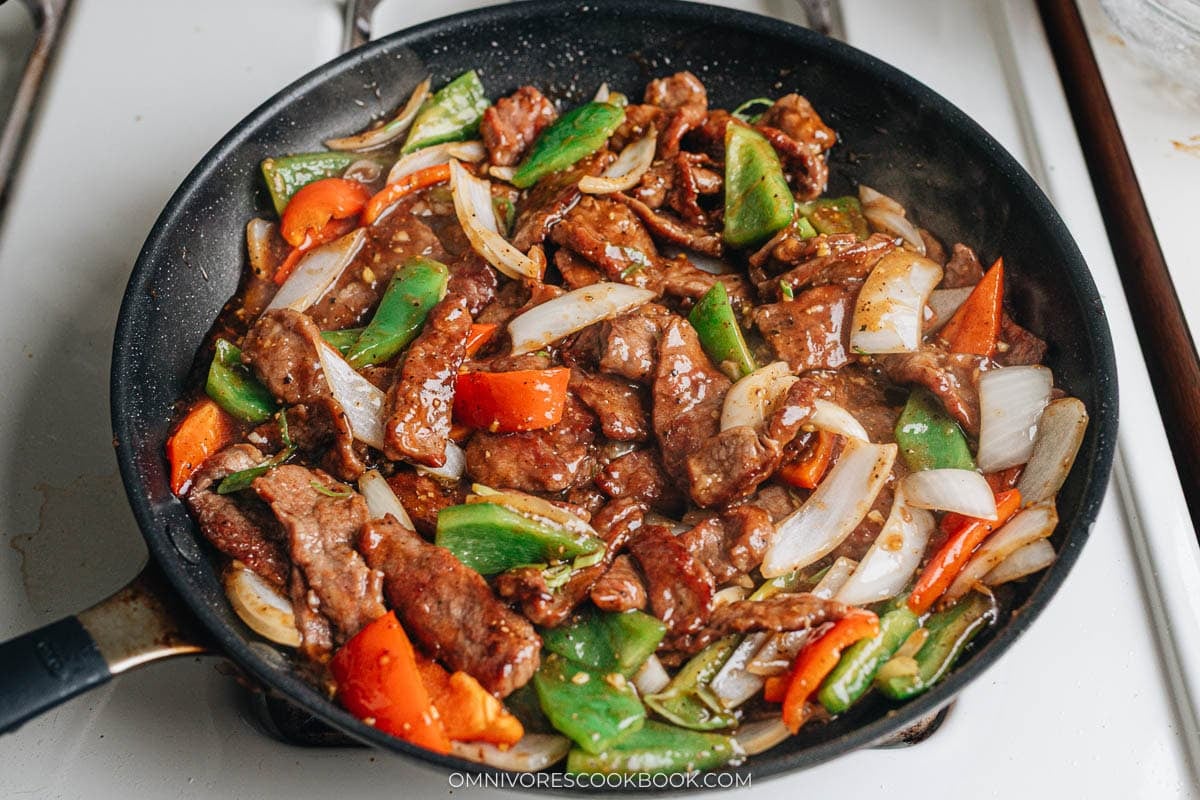
Why do I use a skillet instead of a wok?
Even though every single Chinese cookbook insists on using a wok for stir fry, I found that a nonstick skillet works perfectly for my kitchen. My vintage kitchen has a gas range with low output (9000BTU), which does not heat up a wok properly. With a large flat skillet, the pan will be heated up more evenly and I will have more surface to work with. Not only can I make beautifully charred steak with a great flavor, but I can also use less oil and the steak will not cause any sticking problems.
If you’re curious about the pros and cons of a wok, read my article 10 reasons not to use a wok. And if you want to know about the perfect stir fry setup, read wok vs. stir fry pan.
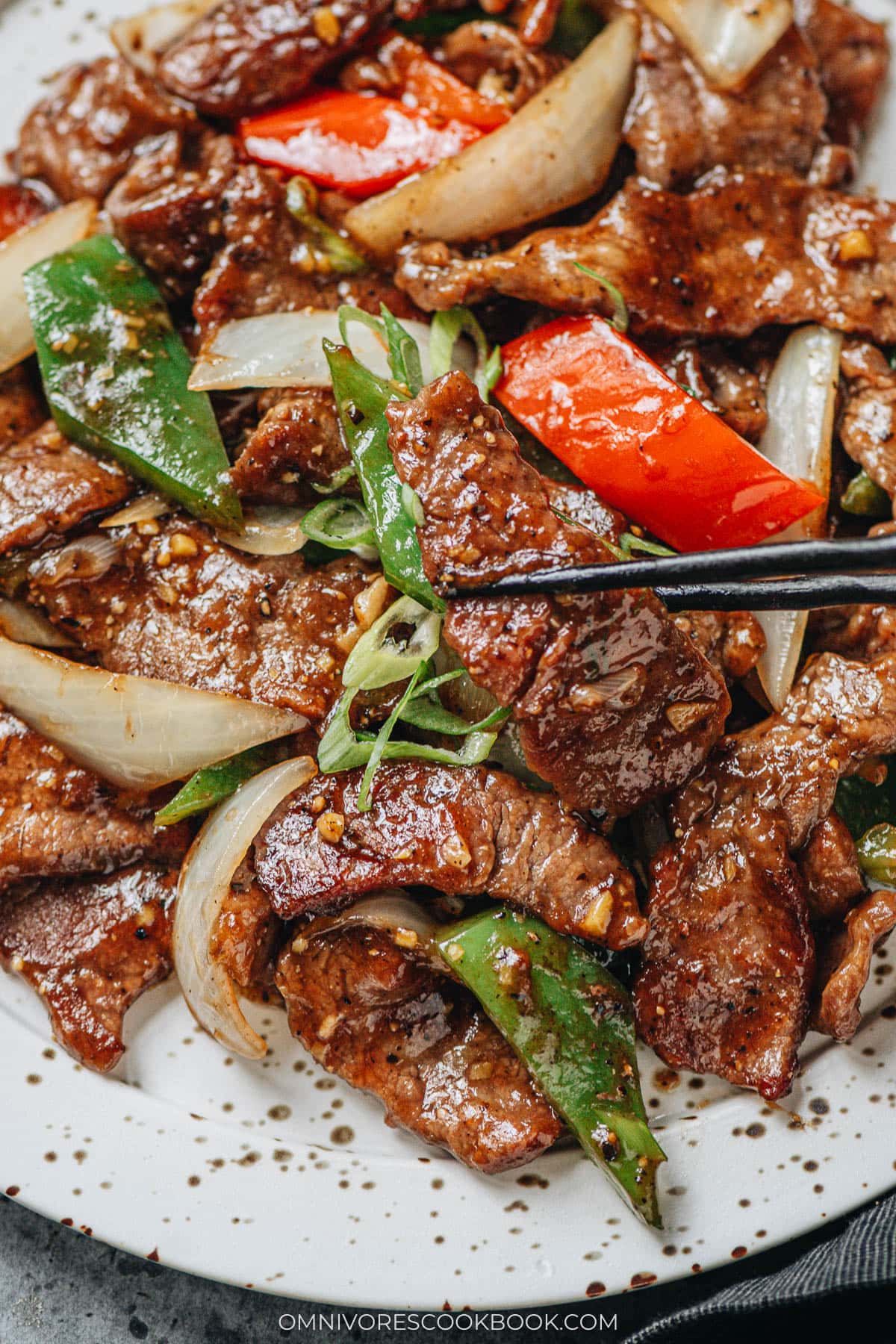
Frequently asked questions
Is fresh ground black pepper necessary?
Yes. Freshly ground black pepper gives the sauce its signature sharp, aromatic flavor. Pre-ground pepper won’t taste as vibrant. I also like to use coarse ground pepper for texture.
How do I prevent the beef from getting tough?
Avoid overcooking by searing quickly over high heat, then removing it from the pan before stir-frying the vegetables. Add it back only at the end. The cornstarch and baking soda in the recipe help the beef remain tender in the hot pan.
Can I make this ahead of time?
It’s best eaten fresh because the beef can toughen and the vegetables lose their crunch if reheated. If you have leftovers, they can stay in the fridge for two to three days without any issue. If you’re hosting and want to prepare it ahead of time, marinate the beef, mix the sauce and slice the vegetables. Store everything in the fridge and cook the dish right before serving.
More Chinese stir fry recipes
- Sweet and Sour Chicken
- Beef Chow Fun
- Beef and Broccoli
- General Tso Tofu
- Orange Chicken
- Shrimp Chow Mein
Chinese Cooking Made Easy
Are you new to this website? This free email series is a great place to start. I’ll walk you through a few of my most popular recipes and show you how and why they work. You’ll quickly start to cook better Chinese food in your own kitchen.

Black Pepper Steak (黑椒牛柳)
Ingredients
- 1 lb flank steak
Marinade
- 2 teaspoons soy sauce
- 2 teaspoons Shaoxing wine
- 2 teaspoons cornstarch
- 1/2 teaspoon baking soda
Sauce
- 1/2 cup chicken broth (*Footnote 1)
- 2 tablespoons Shaoxing wine
- 2 tablespoons soy sauce
- 1 teaspoon dark soy sauce
- 1 tablespoon cornstarch
- 2 teaspoons coarsely ground black pepper
- 1 teaspoon sugar
- 1/8 teaspoon salt (skip this if you use salted Shaoxing wine)
Stir fry
- 2 tablespoons peanut oil (or vegetable oil)
- 2 teaspoons ginger , minced
- 2 cloves garlic , minced
- 1/2 yellow onion , sliced (*Footnote 2)
- 2 bell peppers (I used green and red, sliced) (*Footnote 2)
Instructions
- To cut flank steak, divide the steak lengthwise into two equal pieces along the grain. Then slice each piece against the grain into 1/8” (3-mm) thick pieces. If the flank steak you use is quite thin, you can tilt your knife to a 45 degree angle so the slices are wider.
- Combine steak, soy sauce, Shaoxing wine, baking soda, and cornstarch in a medium-sized bowl. Gently mix by hand until the beef is coated with a thin layer of the mixture. Marinate for 15 minutes while preparing the rest of the ingredients.
- Combine all the sauce ingredients in a small bowl. Mix well and set aside.
- Heat 1 tablespoon of oil in a 12” skillet (or a wok) over medium-high heat. When oil is shimmering, add the steak. Immediately spread the beef into a single layer using a pair of tongs or chopsticks. Sear without moving until the bottom is browned, 1 to 2 minutes. Flip the beef and cook until just cooked through, another minute or so. Turn to the lowest heat and transfer the beef to a plate, set aside.
- Add the remaining tablespoon of oil into the same skillet and reduce to medium heat. Add the ginger and garlic. Give it a quick stir until fragrant. Add the onion and peppers. Stir and cook for 1 minute.
- Stir the sauce mixture until the cornstarch is dissolved completely, and pour it into the skillet. Stir with a spatula immediately and cook until the sauce thickens enough to coat the back of a spoon, a few seconds. Add back the cooked beef. Quickly stir a few times to coat everything with the sauce. Turn off heat and immediately transfer everything to a big plate. Serve hot as a main dish.
Notes
- I used chicken stock because it’s something I always have in my pantry. Feel free to use beef stock for a beefier flavor.
- I like to slice the onion and pepper into similar pieces as the steak. Instead of slicing them into long, thin slices, I like to slice on the bias into shorter pieces. Check the pictures in my blog post above to see how I cut the vegetables.
- For a gluten free dish: use tamari instead of soy sauce and use dry sherry instead of Shaoxing wine.
Nutrition

Did you make this recipe?
I’d love to hear how it turned out for you! Please take a moment to leave a 5-star rating ⭐️ and share your thoughts in the comments further down the page. It really helps others discover the recipe too.

Moe
Excellent! The peppery-ness really came through. I’ve never had it at a restaurant even close to this. Thanks for a great (and easy) recipe!
Michael
This pepper steak is hands down the best I’ve ever made. It rivals some of the best takeout I’ve had. I doubled the sauce, but otherwise, I followed the recipe. I might add bamboo shoots, green onions, and mushrooms, but this is already a hit. It’s definitely going into our dinner rotation.
BABS
Maggie you did it again. This was great. I added mushrooms, celery and doubled the onions and peppers. I cut the amount of sugar to 1 tsp. My husband is a diabetic so I try to limit the amount of sugar in my recipes. I also used a ribeye steak that I had in the freezer. I will definitely make this again.
Sampee
This meal is so delicious